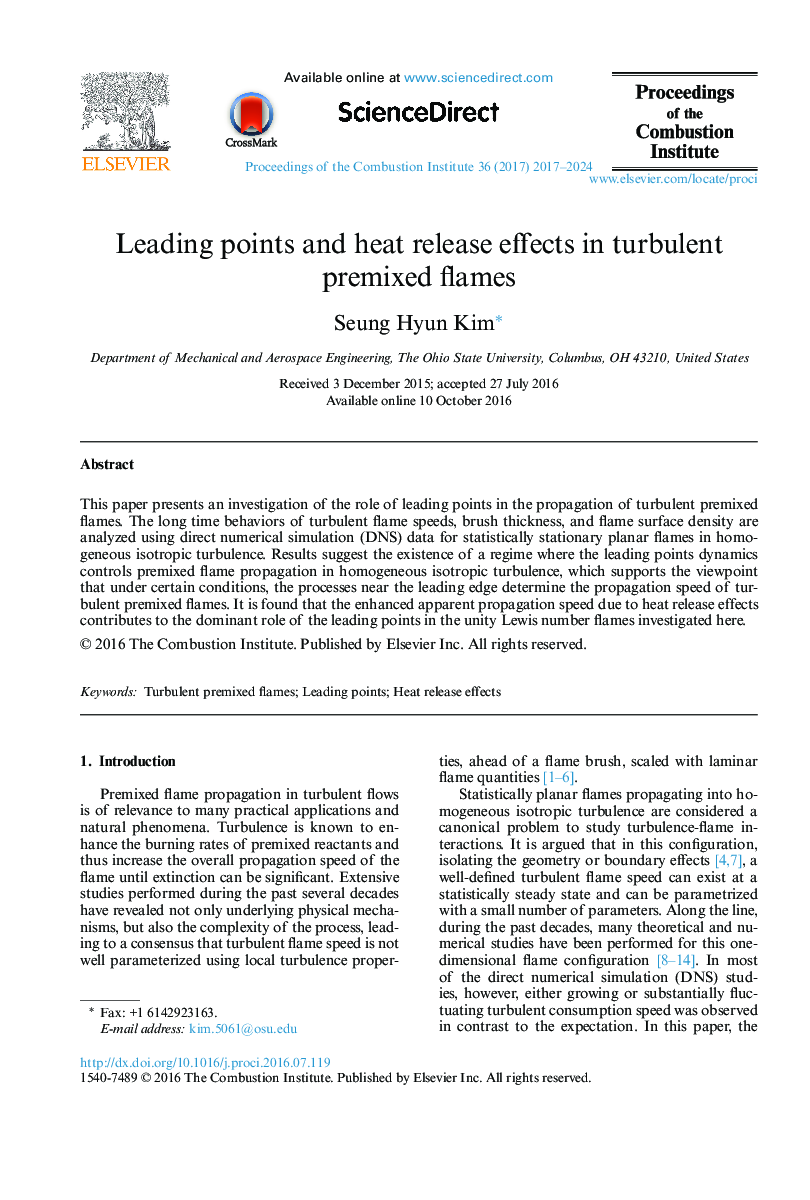| Article ID | Journal | Published Year | Pages | File Type |
|---|---|---|---|---|
| 6478222 | Proceedings of the Combustion Institute | 2017 | 8 Pages |
This paper presents an investigation of the role of leading points in the propagation of turbulent premixed flames. The long time behaviors of turbulent flame speeds, brush thickness, and flame surface density are analyzed using direct numerical simulation (DNS) data for statistically stationary planar flames in homogeneous isotropic turbulence. Results suggest the existence of a regime where the leading points dynamics controls premixed flame propagation in homogeneous isotropic turbulence, which supports the viewpoint that under certain conditions, the processes near the leading edge determine the propagation speed of turbulent premixed flames. It is found that the enhanced apparent propagation speed due to heat release effects contributes to the dominant role of the leading points in the unity Lewis number flames investigated here.
